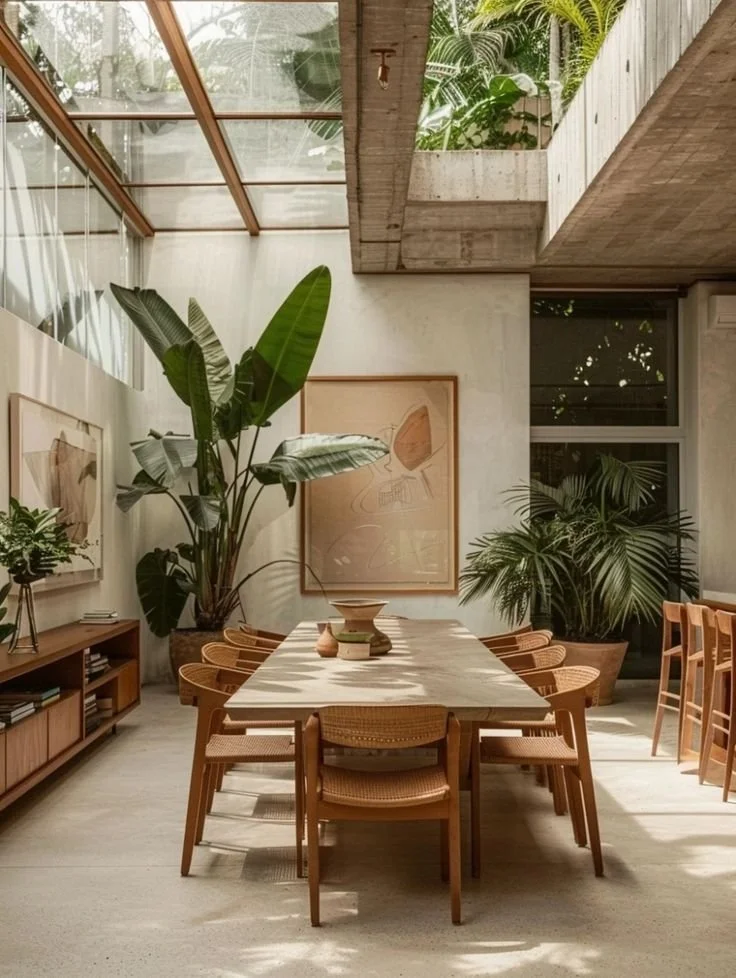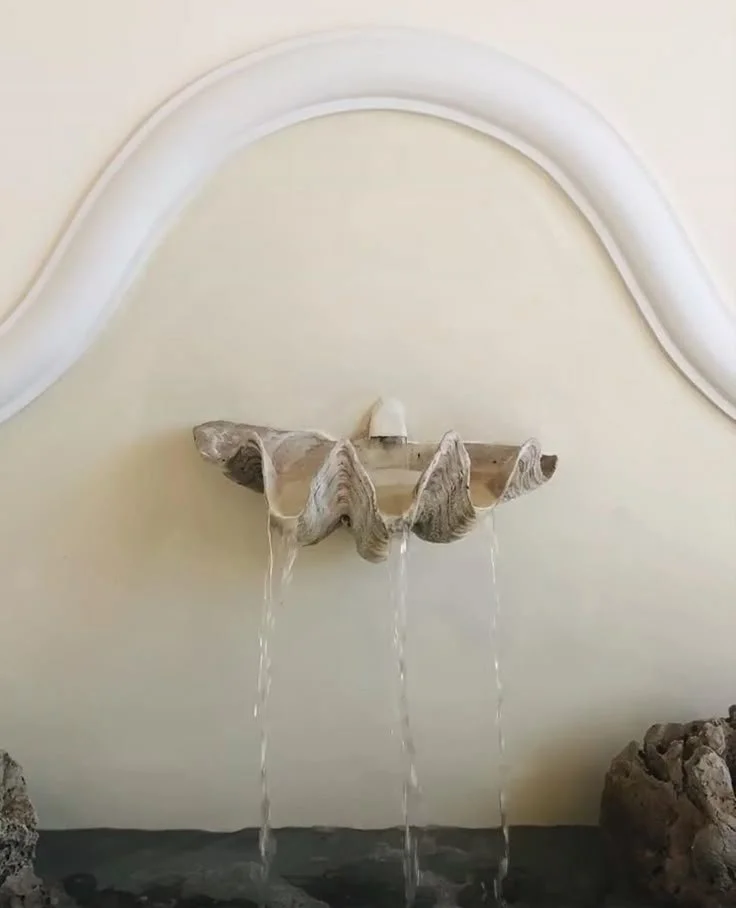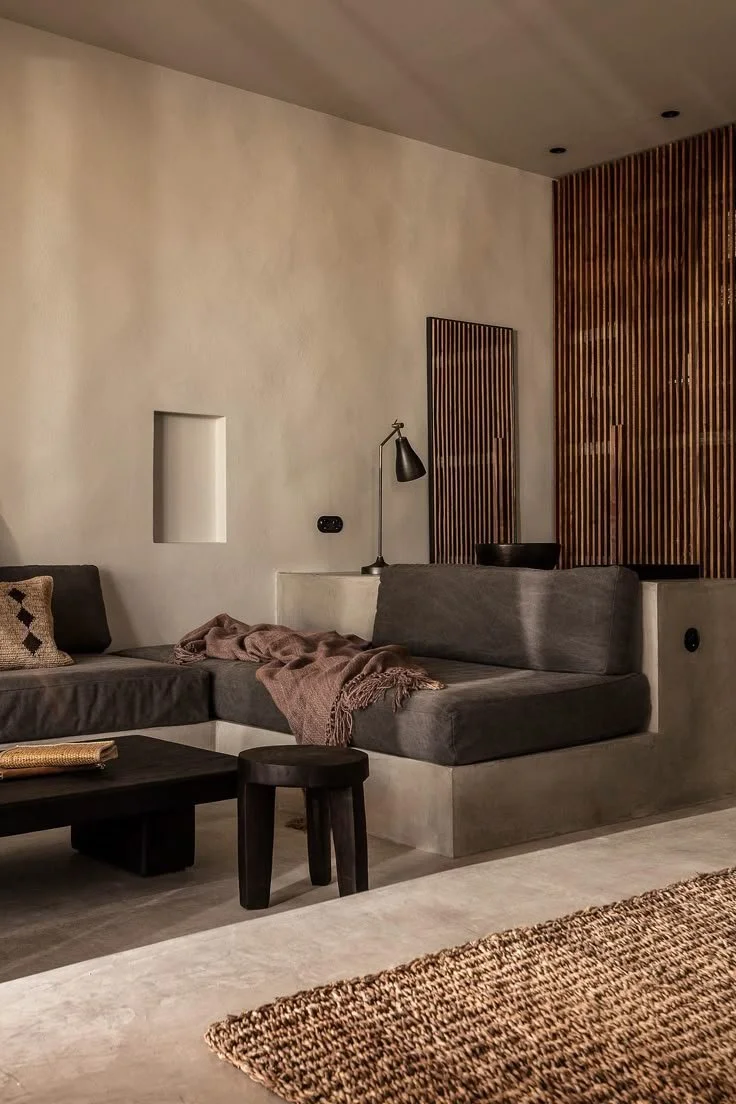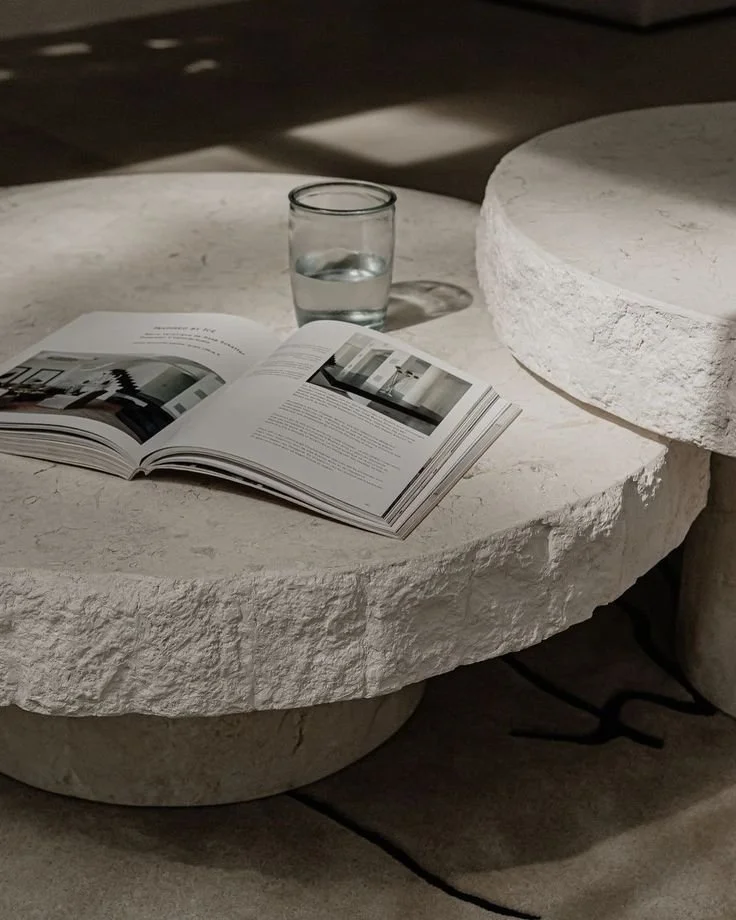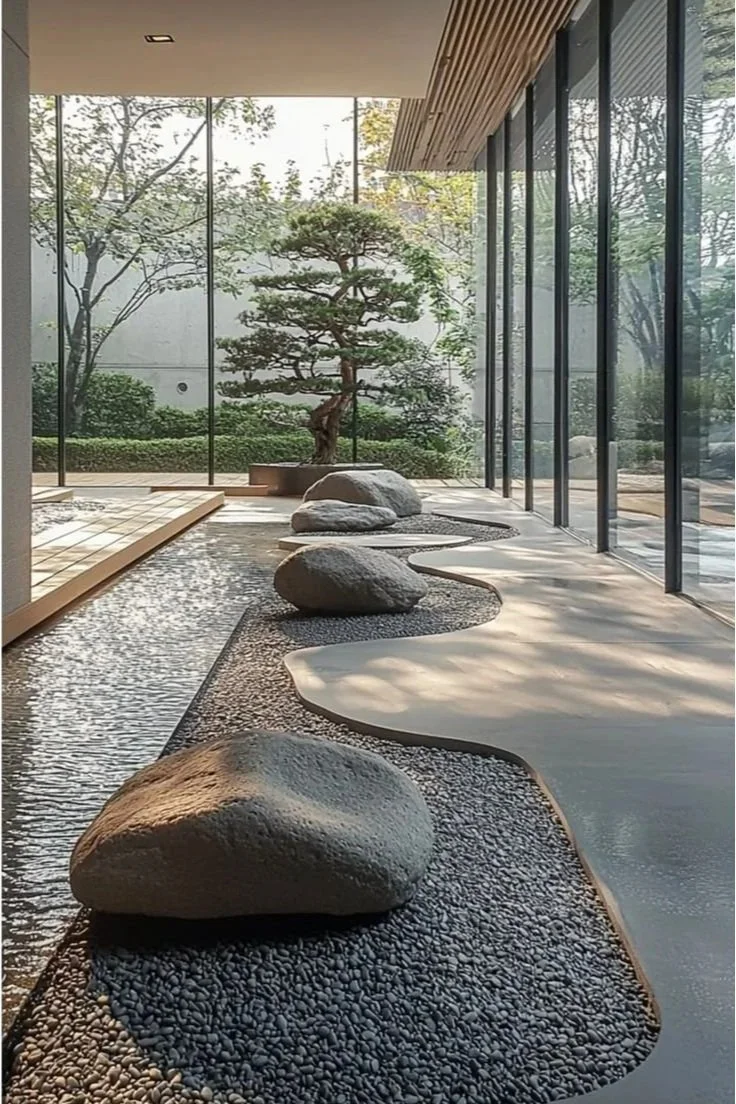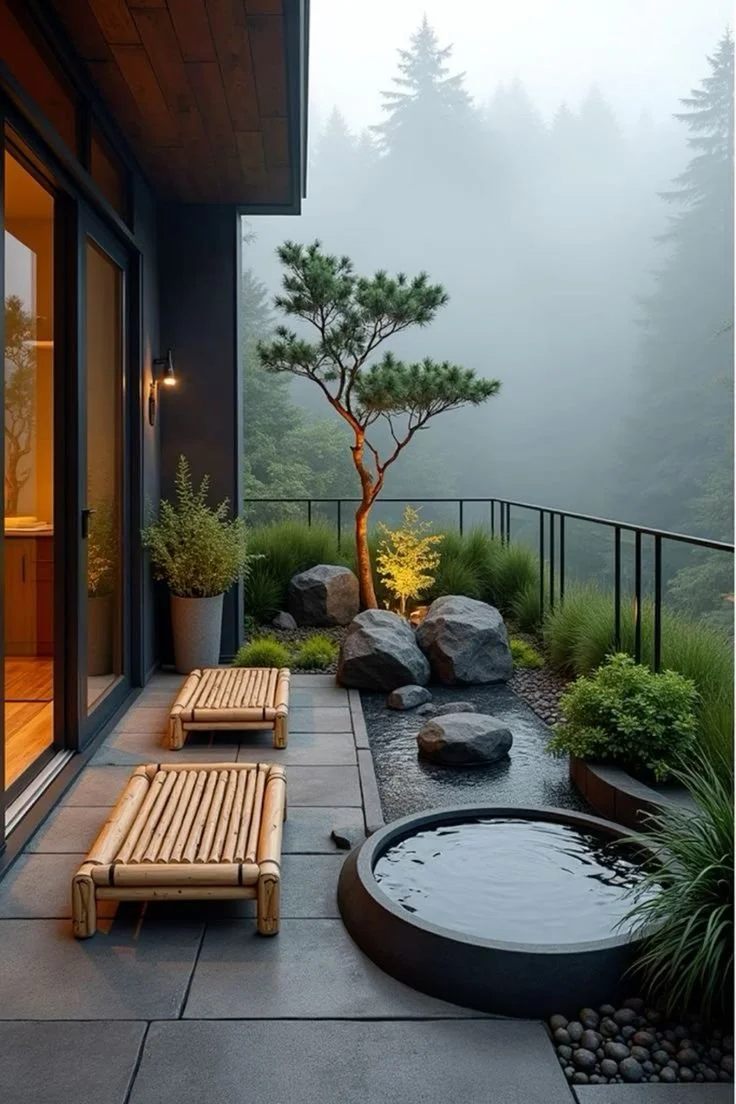Biophilic Design in Home Decor: A Return to Nature for Serene Living Spaces
In an era where technology often pulls us further from nature, there is a growing movement pushing us to reconnect with the earth—an ethos brought to life through biophilic design. This concept, rooted in the idea that humans have an innate need to connect with the natural world, is redefining modern interiors. Biophilic design emphasizes the use of natural materials, abundant greenery, and organic elements to create tranquil living spaces. Its rise, especially in the context of the past few years, comes as a response to the pressures of urbanization, environmental crises, and the modern quest for wellness. Through this design approach, our homes evolve into restorative sanctuaries—spaces that not only reflect the beauty of nature but also nurture our physical and mental well-being.
So what is Biophilic Design
“Biophilic design is a concept used within the building industry to increase occupant connectivity to the natural environment through the use of direct nature, indirect nature, and space and place conditions.”
The Rise of Biophilic Design: Why It's Trending
Biophilic design is not simply a passing trend; it is a deliberate shift in how we approach interior design. As urban landscapes become more built-up, many of us find ourselves longing for the grounding, soothing effects of nature. The rise of this movement coincides with increased awareness of mental health, sustainability, and environmental consciousness. For those weary of fast-paced city life and digital overload, biophilic design offers a sanctuary of calm and connection.
Research has shown that exposure to nature has a measurable impact on our well-being. Studies have linked natural elements with lower stress levels, improved cognitive function, and a heightened sense of relaxation. Biophilic design taps into these benefits by blending the natural world with our indoor spaces, allowing us to experience these positive effects daily. With the continued interest in eco-friendly living, this movement is set to stay, influencing everything from architecture to home decor.
How to Incorporate Biophilic Design Into Your Home
Incorporating biophilic design into your home doesn’t require a complete overhaul of your space; rather, it’s about thoughtfully introducing natural elements that can foster a more balanced and harmonious environment. Whether you're in a city apartment or a countryside house, these principles can be adapted to suit any space. Below are ten ways to bring biophilic design into your home, along with real-life examples of how it’s been done beautifully in contemporary interiors.
1. Bring the Outdoors In with Plants
One of the most fundamental ways to embrace biophilic design is through the use of plants. Indoor greenery serves not only as a visual connection to nature but also contributes to improved air quality and a sense of vitality. From large statement trees like the fiddle leaf fig to cascading vines, plants help to soften and add life to any room.
Real-life example: The home of renowned architect Bjarke Ingels showcases biophilic design through its abundant use of plants. In his Copenhagen residence, plants are incorporated into nearly every room, from wall-mounted planters in the living room to a thriving rooftop garden that acts as a private oasis, blurring the lines between the indoors and outdoors.
2. Natural Lighting for a Soothing Ambiance
Maximizing natural light is a crucial component of biophilic design. Sunlight can enhance mood, boost productivity, and promote a sense of openness and warmth. Consider open-plan layouts, large windows, and skylights to flood your space with light.
Real-life example: The home of celebrity designer Kelly Wearstler in California utilizes natural light to dramatic effect. Large glass walls open the interiors to the outdoor landscape, creating a seamless flow between the indoors and the expansive garden. The result is a space filled with light, greenery, and fresh air—perfectly embodying biophilic principles.
3. Natural Materials: Wood, Stone, and Woven Textures
The materials used in biophilic design often include wood, stone, clay, and other organic textures that ground the space and evoke a sense of connection to the earth. Natural finishes, such as raw timber or stone walls, contribute to a serene, tactile environment.
Real-life example: The interiors of the Soho Farmhouse in Oxfordshire, designed by the highly regarded design studio Soho House, are an embodiment of biophilic design. Warm wooden floors, stone walls, and leather furniture make the space feel as if it belongs to the surrounding countryside. The materials are both luxurious and rustic, reflecting a deep connection with nature.
4. Indoor Water Features for Tranquility
Incorporating water features—whether a small indoor fountain or a living wall with a cascading waterfall—adds a calming, sensory experience to your space. The sound of water promotes relaxation and connects you to nature’s rhythmic patterns.
The soft sounds of trickling water combined with the natural stone surroundings make the space feel like an urban retreat.
5. Earthy Colour Palettes for a Grounded Feel
Biophilic design is all about evoking the natural world through color. Earth tones such as greens, browns, beiges, and blues bring to mind forests, mountains, and oceans, creating an atmosphere of calm and relaxation. Use these hues on walls, fabrics, and furniture to evoke nature’s palette.
Real-life example: The home of designer Ilse Crawford in London showcases earthy tones throughout, from the deep green kitchen cabinets to the rich brown velvet upholstery. These colors not only mirror nature’s own shades but also create a feeling of grounded serenity within the space.
6. Organic Shapes in Furniture and Decor
Biophilic design encourages the use of organic, flowing shapes—whether in furniture, light fixtures, or decor pieces—that mimic the curves and lines found in nature. Avoiding sharp, angular edges can soften a room and make it feel more harmonious.
Rounded, sculptural furniture in soft, organic shapes feature prominently. Often living rooms boast a large, curved sectional sofa and circular coffee tables, bringing a sense of flow and softness that echoes the natural world.
7. Natural Flooring Materials: Stone, Bamboo, and Cork
The choice of flooring is another way to embrace biophilic design. Materials like wood, bamboo, cork, and stone create a direct link to nature and provide an environmentally friendly alternative to traditional flooring options.
Real-life example: In the sustainable home of architect Sarah Susanka, bamboo flooring runs throughout the entire home, creating a sleek yet organic foundation. The natural tones of bamboo not only offer warmth and elegance but also align with her eco-conscious design philosophy.
8. Open, Airy Spaces to Foster Connection
Biophilic design also emphasises openness and spaciousness. Open-plan layouts and the strategic use of glass partitions or large windows create a sense of freedom and encourage a connection between interior spaces and the outdoors.
Real-life example: The home of fashion mogul Giorgio Armani in Milan features a stunning open-plan living area that blends seamlessly with the outdoor terrace. Floor-to-ceiling windows offer expansive views of the lush garden, making the boundary between the indoors and outdoors almost imperceptible.
9. Incorporate Organic Art and Sculpture
Art is another avenue to integrate biophilic design into your home. Consider incorporating pieces that reflect nature, such as botanical prints, driftwood sculptures, or abstract art inspired by the natural world.
Real-life example: The residence of designer and artist India Mahdavi showcases organic art and sculptures throughout. In the living room, a large, abstract painting of a forest scene adds color and depth while reminding viewers of the serenity found in nature.
10. Indoor-Outdoor Living Spaces
Perhaps the most powerful expression of biophilic design is creating seamless transitions between your indoor and outdoor spaces. Patios, terraces, and balconies can be treated as extensions of your home, filled with plants, natural materials, and comfortable seating areas.
Real-life example: The stunning residence of actor Johnny Depp in the South of France features a seamless flow between indoor and outdoor spaces. The outdoor patio is outfitted with natural stone and lush greenery, while the large glass doors allow the living room to merge with the garden effortlessly.
Final Thoughts
Biophilic design offers a much-needed antidote to the modern, tech-saturated world, bringing the restorative power of nature into our homes. From the lush greenery of indoor plants to the tactile appeal of natural materials, biophilic design creates serene living spaces that foster peace, wellness, and connection to the natural world. As this design trend continues to gain momentum, it’s clear that the future of home decor will be rooted in nature—creating spaces where beauty, tranquility, and the environment exist in harmony.

